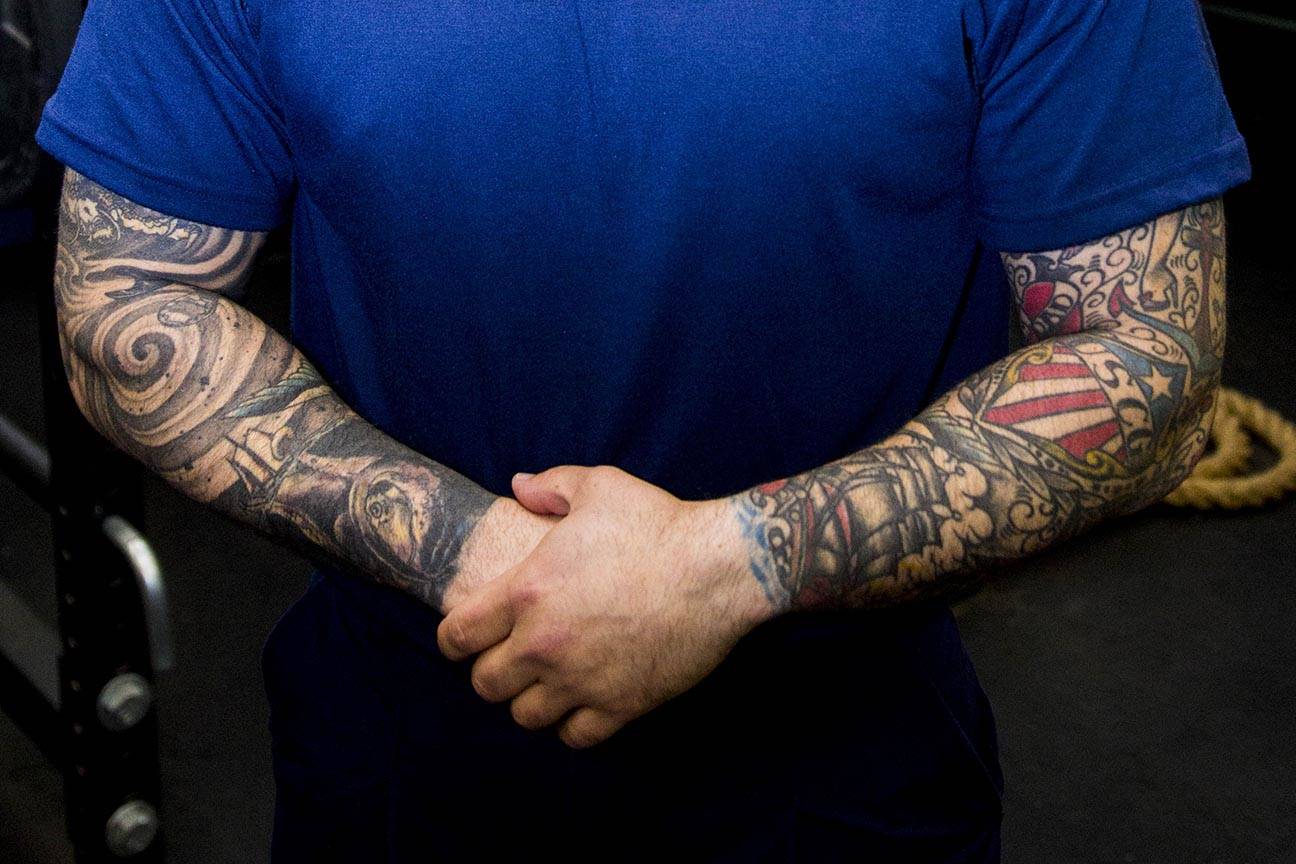A change to Coast Guard tattoo policy will allow Coast Guardsman or recruits to have (small) tattoos on their hands or some fingers.
The policy allows for one tattoo per hand on a single finger, excluding the thumb. A single tattoo no larger than an inch in dimension on the back of the hand is allowed. Tattoos on the thumbs or on the palms are still forbidden. The last change in 2016 allowed full “sleeve” tattoos down to the wrist.
“In an effort to get underrepresented minorities and females into the Coast Guard, we’re trying to remove one of the barriers,” said Chief Petty Officer Colin Rankin, attached to Coast Guard Recruiting Command in Anchorage. “A lot of it is not turning away otherwise talented people.”
Many quality recruits who would otherwise make excellent Coast Guardsmen have to be turned away because of tattoo policy, Rankin said. Changing social mores mean that more and more people have tattoos these days, Rankin said.
“I think it shows that the Coast Guard is willing to reevaluate what constitutes a professional appearance,” said Cmdr. Lyle Kessler, external affairs officer at Coast Guard District 17 in Juneau. “Body art doesn’t affect performance and this is another way we can have the best performance possible. We want to recruit and retain the best workforce we can.”
Rankin also said that the individuality that many people associate with getting tattoos is something the Coast Guard is happy to have as the force works to increase its diversity. Rankin also said attitudes about tattoos, both in and out of the service, are shifting.
“The other armed services, They’ve seen an uptick in quality recruiting since they’ve changed their tattoo policy,” Rankin said. “The Navy did a study on performance and it showed tattoos didn’t affect it at all.”
A Naval tradition
“I think there was a stigma on the old 1940s, 1950s, party-hard sailor, all tatted up and raising a ruckus in town,” Rankin said. “Now you’re seeing these kids with masters degrees all tatted up, and they’re not that kind of sailor.”
Nautical tattoos are an old tradition, and well represented in the American naval services, including the Coast Guard, the Navy and the Marine Corps. A number of Coast Guardsmen stationed in Juneau have followed the same tradition.
“There’s the pig and chickens, the swallows, the stars,” said Boatswain’s Mate 2nd Class Jesse Dyals. The pig and chickens, usually tattooed on a sailor’s feet, are supposed to represent good luck due to the good odds that pigs and chickens, kept on the decks of ships, would survive their sinking.
The swallows, typically but not always tattooed on the chest, are used to show that a sailor has sailed more than 5,000 miles, including crossing the Equator and taking part in a line-crossing ceremony. The swallows are migratory birds, and their facility for finding their way home is seen as a good omen. Additionally, those sailors that have crossed the equator and been initiated into the Court of Neptune by what can be a strenuous ritual known as shellbacks. Those who haven’t crossed the equator are known as pollywogs.
The nautical stars, five pointed stars traditionally done in black and white, are synonymous with the guidance sailors used to derive from the stars as they navigated the vast oceans.
“I like the history,” said Machinery Technician 2nd Class Anthony Delorenzo. “I love being underway out on the sea doing stuff.”
Many sailors like Delorenzo also get tattoos in the Sailor Jerry style, said Boatswain’s Mate 1st Class Trevor Shirley. Characterized by bright colors, distinct font choice, and iconic shading style, the distinct art has remained popular within the military since WWII.
With the loosening in regulations, some Coast Guardsmen are already considering what to add.
“The new one (I want) is the crossed anchors in the web of the thumb,” said Shirley, referring to the traditional crossed anchors are the insignia for his military specialty as a boatswain’s mate.
Changing attitudes and regulations
“A lot of guys would come in and get a full sleeve lined out in one shot,” said Em Lang, tattoo artist at High Tide Tattoo in Juneau.
The last change in tattoo regulations in 2016 allowed Coast Guardsmen to get full sleeve tattoos, which are tattoos all the way around the arm down the wrist, Rankin said. Before that, Coast Guardsmen were allowed to get tattoos no larger than the palm of their hand, Rankin said.
In the military, if tattoo policy changes to something more restrictive, service members who got tattoos under an older policy are “grandfathered in,” meaning their tattoos are allowed as-is so long as they’re documented.
“It seems like anytime they suddenly don’t need so many bodies, they tighten up the tattoo regulations, so guys can’t get promoted,” Lang said. “In 2011, when the military regulations were tightened, a lot of guys had to get parts of their tattoos covered up.”
Tattoos still need to be in line with the Coast Guard’s mission, and not represent gangs or hate speech, Kessler said.
“It’s still got to be consistent with the core values,” Kessler said, referring to the Coast Guard’s core values of honor, respect and devotion to duty.
For those looking to join the Coast Guard and concerned about whether their tattoos will be a problem, Rankin encouraged them to reach out and speak to a recruiter about whether it’ll be an issue.
• Contact reporter Michael S. Lockett at 523-2271 or mlockett@juneauempire.com.

